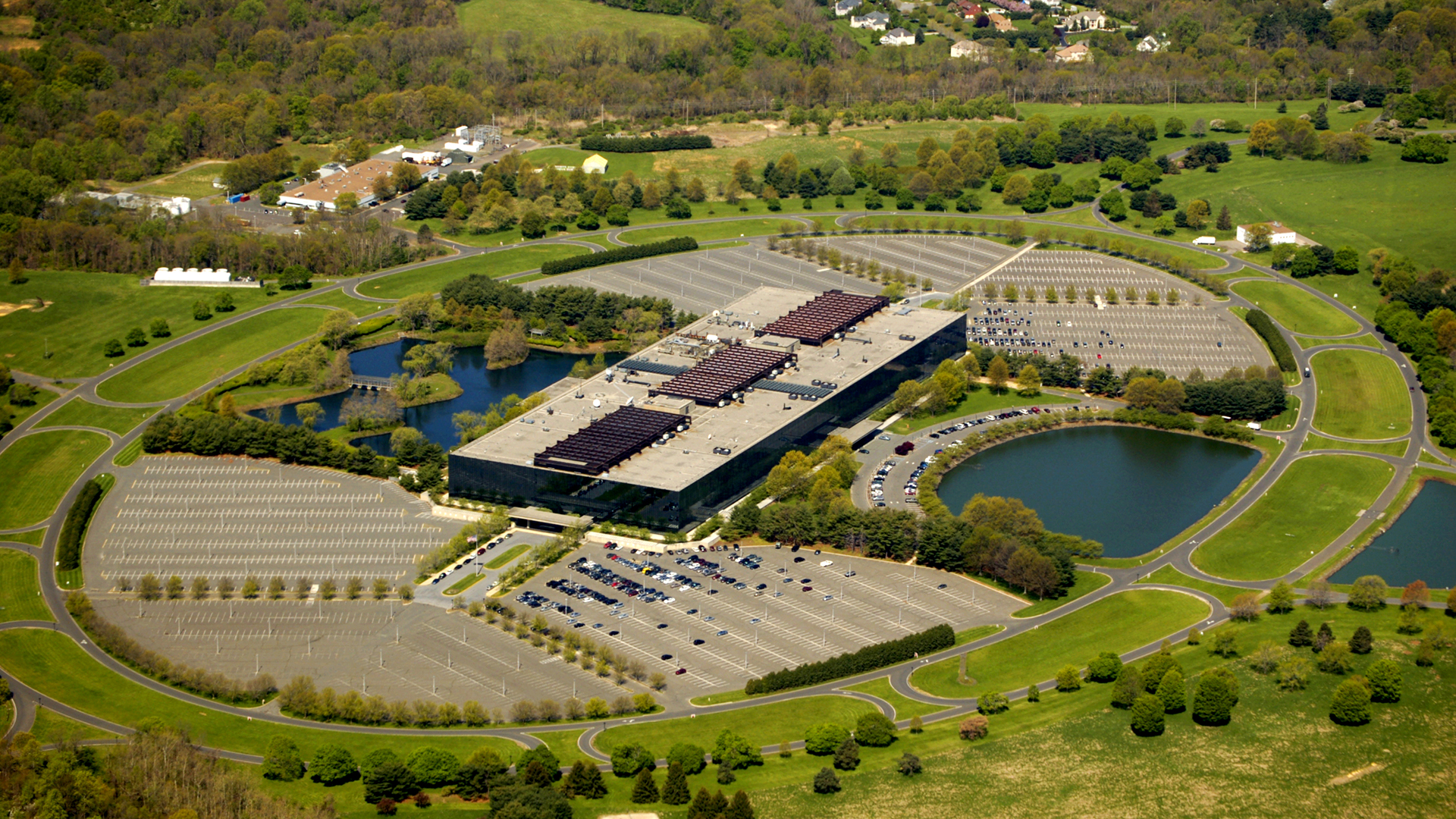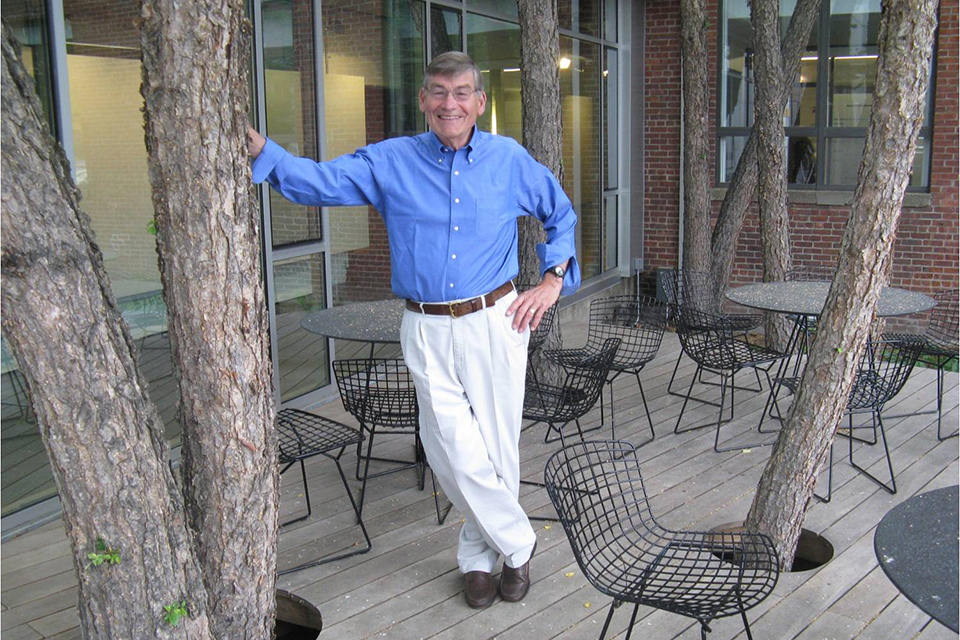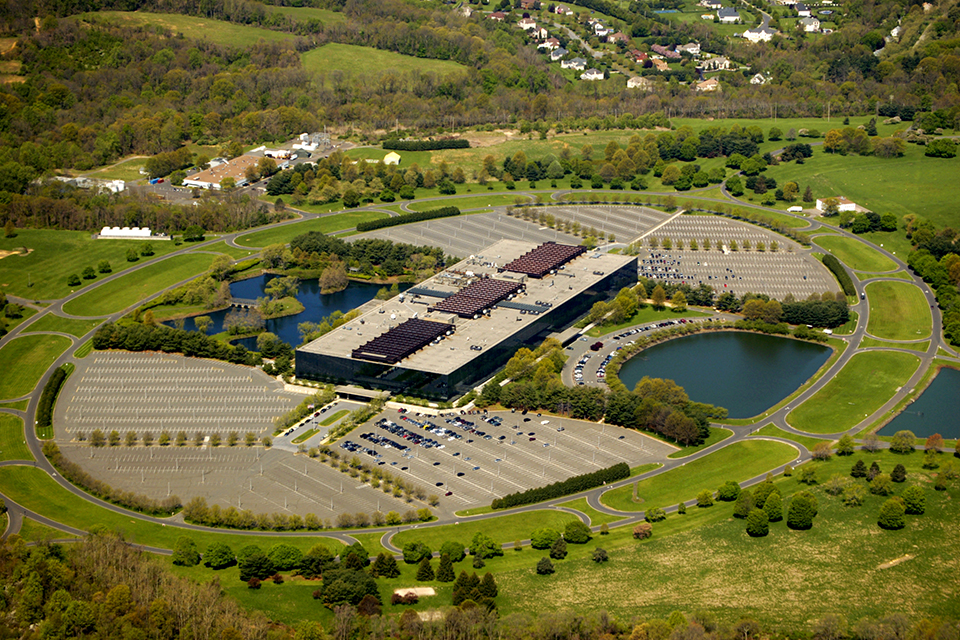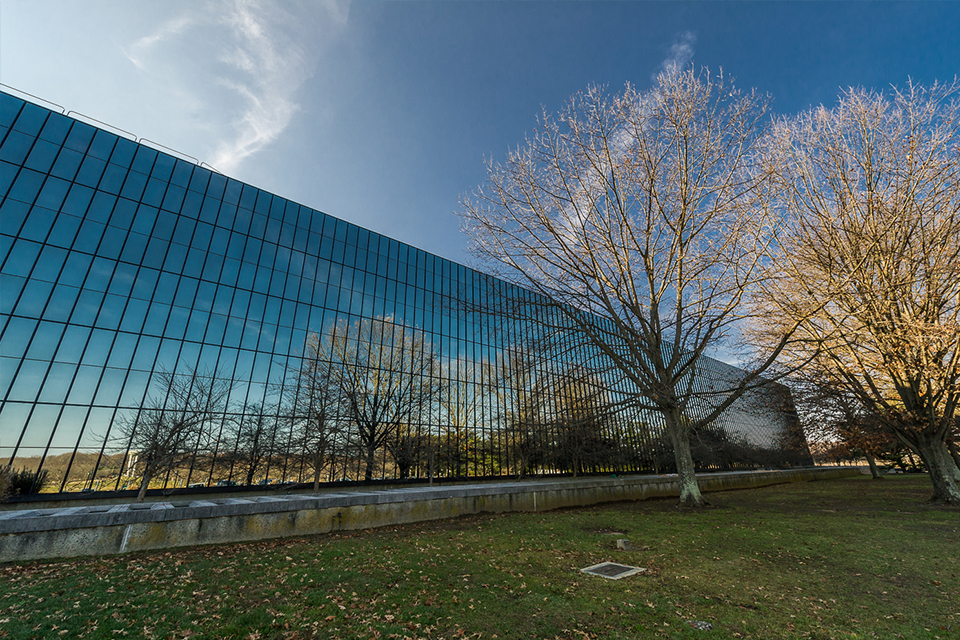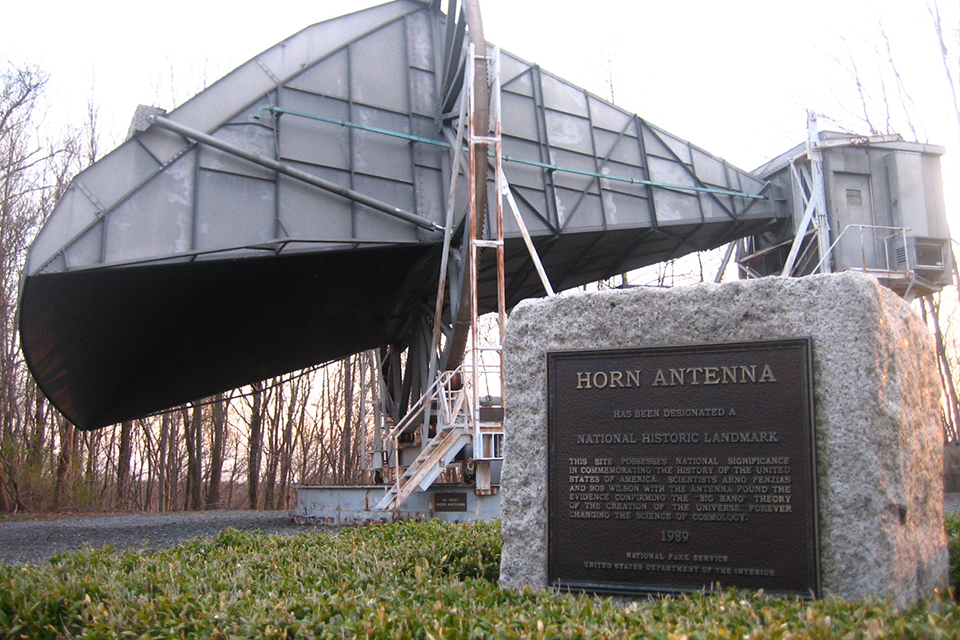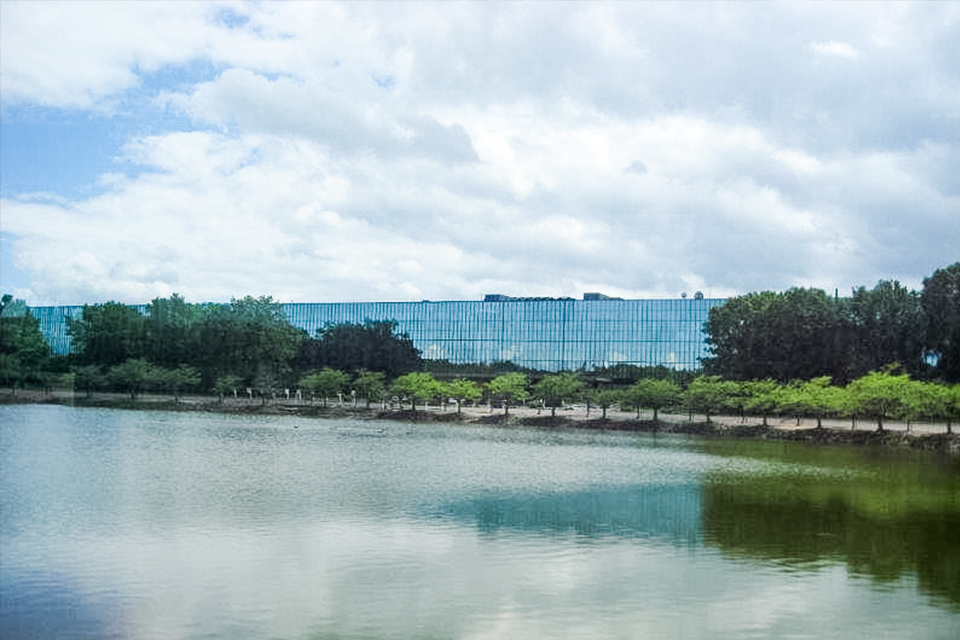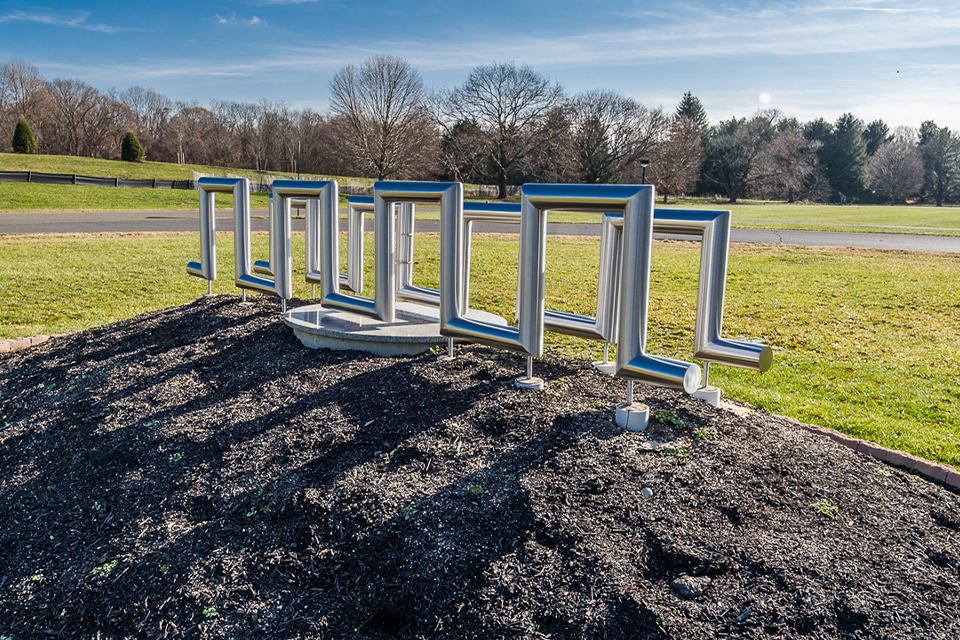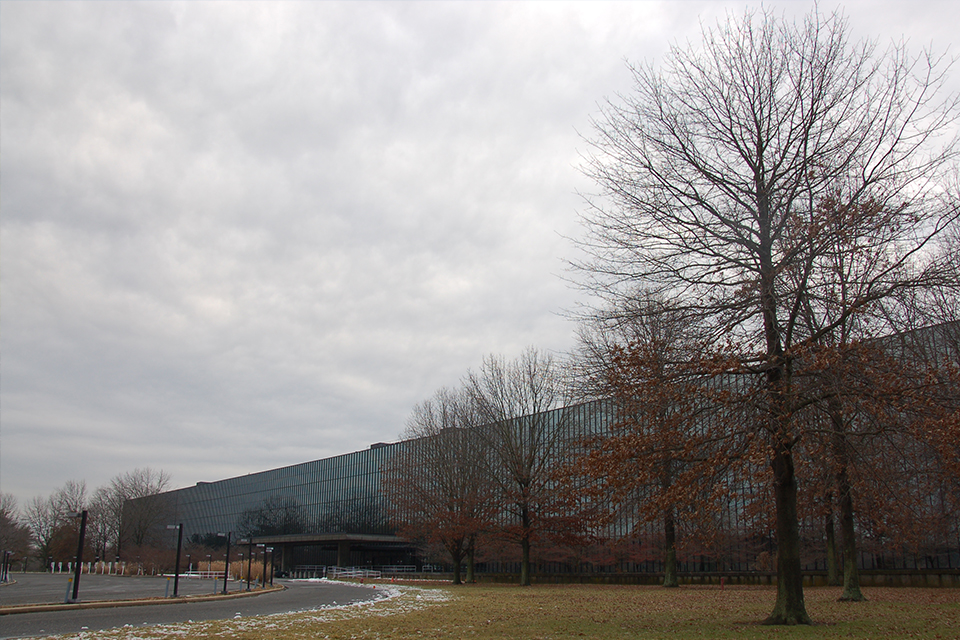Located in a suburban township 35 miles south of Manhattan, this two-million-square-foot building designed by Eero Saarinen and Associates was constructed in three phases between 1959 and 1985. A stunning example of midcentury Modernist architecture, the building is clad in mirrored glass, a material developed specifically for this project; it allows 25 percent of the available sunlight to pass through, while blocking 70 percent of the sun’s heat. The glass was meant to reflect the surrounding landscape and pond, making the building “disappear into the landscape” from some vantages at certain times of day. Sasaki, Walker and Associates designed a 134-acre portion of what was initially a 472-acre site, the remainder of which was left as open fields and wooded expanse. As home to Bell Laboratories for nearly half a century, the site spurred technological advancements that have literally shaped our world, such as the transistor and the cell phone. Bell Laboratories was the workplace of six Nobel Prize laureates, and the site of the creation of radio astronomy by Karl Jansky in 1932.
Background
The designed landscape is a pioneering example of what has been called a corporate campus, corporate estate, corporate villa, or “industrial Versailles.” It forms a keyhole-shaped parcel outlined by mature canopy trees and comprising two main parts: an ellipse that surrounds the building itself and a long, tapering lawn defined by entrance and exit roads extending to the north. The ellipse is divided roughly into thirds, with the eastern and western portions almost entirely devoted to vehicular parking. According to historian Patrick Harshbarger, the campus was “a distinctive type of new postwar suburban landscape designed at an automobile scale, very different from prewar corporate headquarters, which had been mostly located in downtown skyscrapers or adjacent to manufacturing facilities.”
Saarinen's building bisects the middle third of the ellipse, which contains symmetrically arranged lawns, plantings, and bodies of water: the northern portion contains a pond (190 x 140 yards) and parking area; the southern a lagoon-like body of water outlined by trees, with a central island accessed via a footbridge. A miniature replica of Karl Jansky’s radio telescope is located in the northeastern section of the ellipse, and a water tower near the site’s main entrance mimics the shape of a transistor. Harshbarger notes that Bell Labs “was immediately recognized as a significant blending of architecture, engineering and landscape design.”
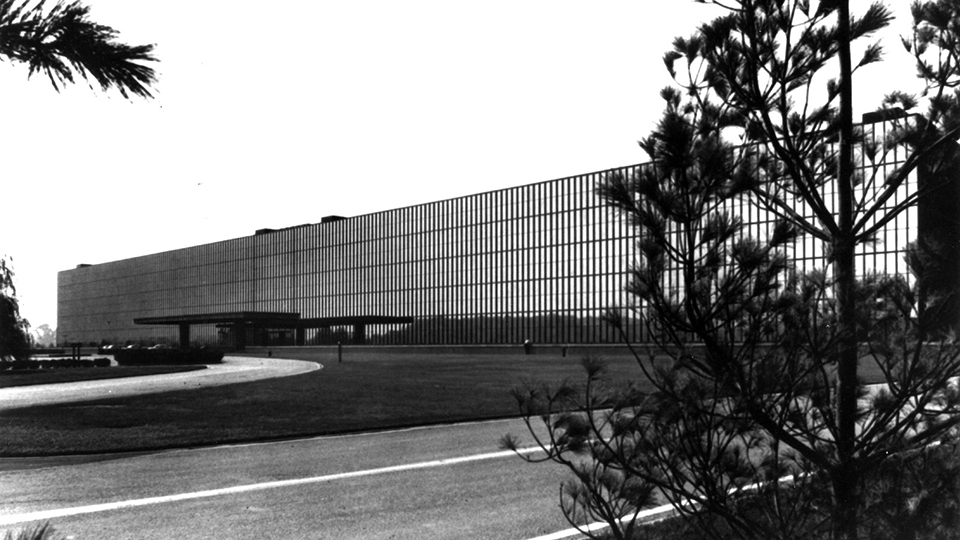 Bell Laboratories, Holmdel, NJ, courtesy Preservation New Jersey.
Bell Laboratories, Holmdel, NJ, courtesy Preservation New Jersey.
In 2006 the owner of the property announced that they had signed a contract with a private developer; the developer intended to raze the building because it was deemed “obsolete.” This led to a storm of protest from scientists from all over the world who had once worked there. Preservation New Jersey (PNJ), the statewide historic preservation advocacy group, listed the building as one of its “10 Most Endangered Historic Sites” in May 2007.
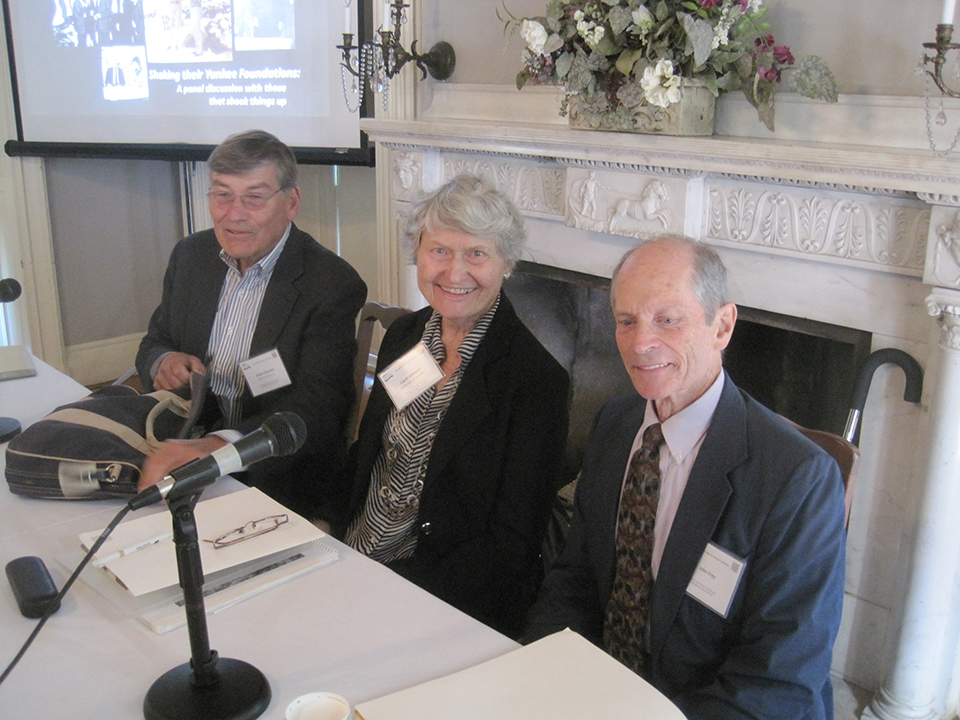
Panelist Stuart O. Dawson (left) discussed his role developing Corporate Campuses at the Boston Shapers Conference at the Lyman Estate (also pictured are Carol Johnson and John Frey), Waltham, MA, 2010. Photo By Charles A. Birnbaum, courtesy The Cultural Landscape Foundation.
Advocacy and Engagement
TCLF enrolled Bell Labs in its Landslide program of at-risk landscapes in the same year. Along with other advocacy groups, including PNJ, the National Trust for Historic Preservation, Docomomo, Citizens for Informed Land Use, the Present Past Preservation Network, and American Institute of Architects (AIA)-New Jersey, TCLF formed a coalition and proposed an education outreach effort to help Holmdel residents and leaders better understand the importance of the historic architecture and landscape architecture of the Bell Labs site, and to explore more creative and sustainable ways of adapting it. The coalition sponsored the “Bell Labs Charette,” a study undertaken in 2008 and published in 2009.
After languishing for several years, the site was purchased in 2013 by Somerset Development, which received approval to re-purpose the building as a mixed-use town center, becoming Bell Works, a commercial hub featuring shops, offices, a hotel, and other facilities. The iconic architecture of the building inspired Alexander Gorlin and Paola Zamudio of NPZ Style & Decor to balance contemporary design with the building’s historic past. A central atrium has floors that mimic an art installation by Josef Albers, and other areas of the building have been refreshed and restored. The outlying, unaltered acreage was sold for development and now contains single-family residences and other housing. Bell Laboratories was listed in the National Register of Historic Places in 2017 for Significance in both Architecture and Landscape Architecture. In 2019 it was added to the Historic American Landscapes Survey (HALS) collection of documented sites.
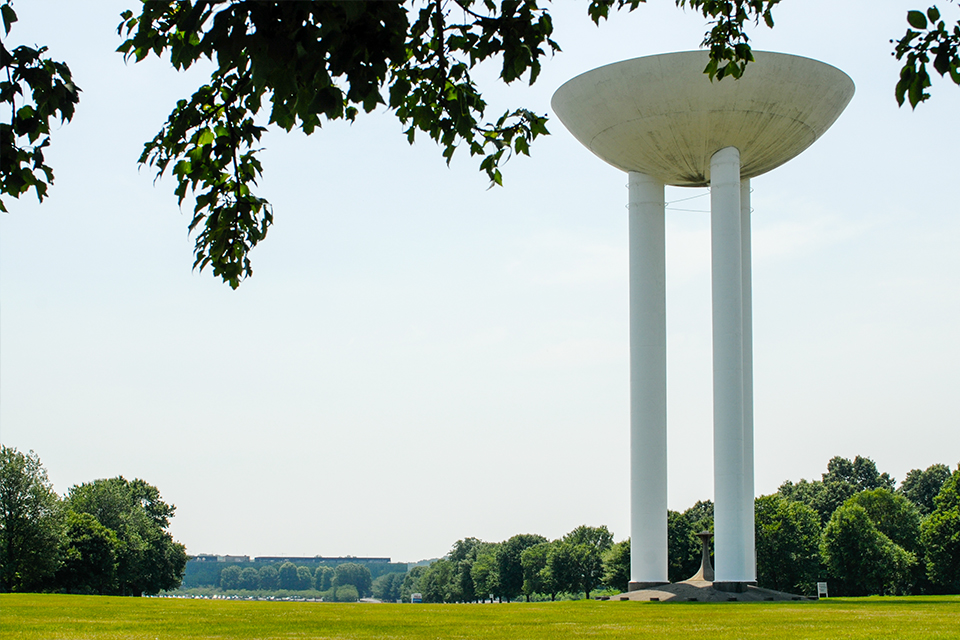
-
Bell Laboratories, Holmdel, NJ. Photo by Lee Beaumont.
